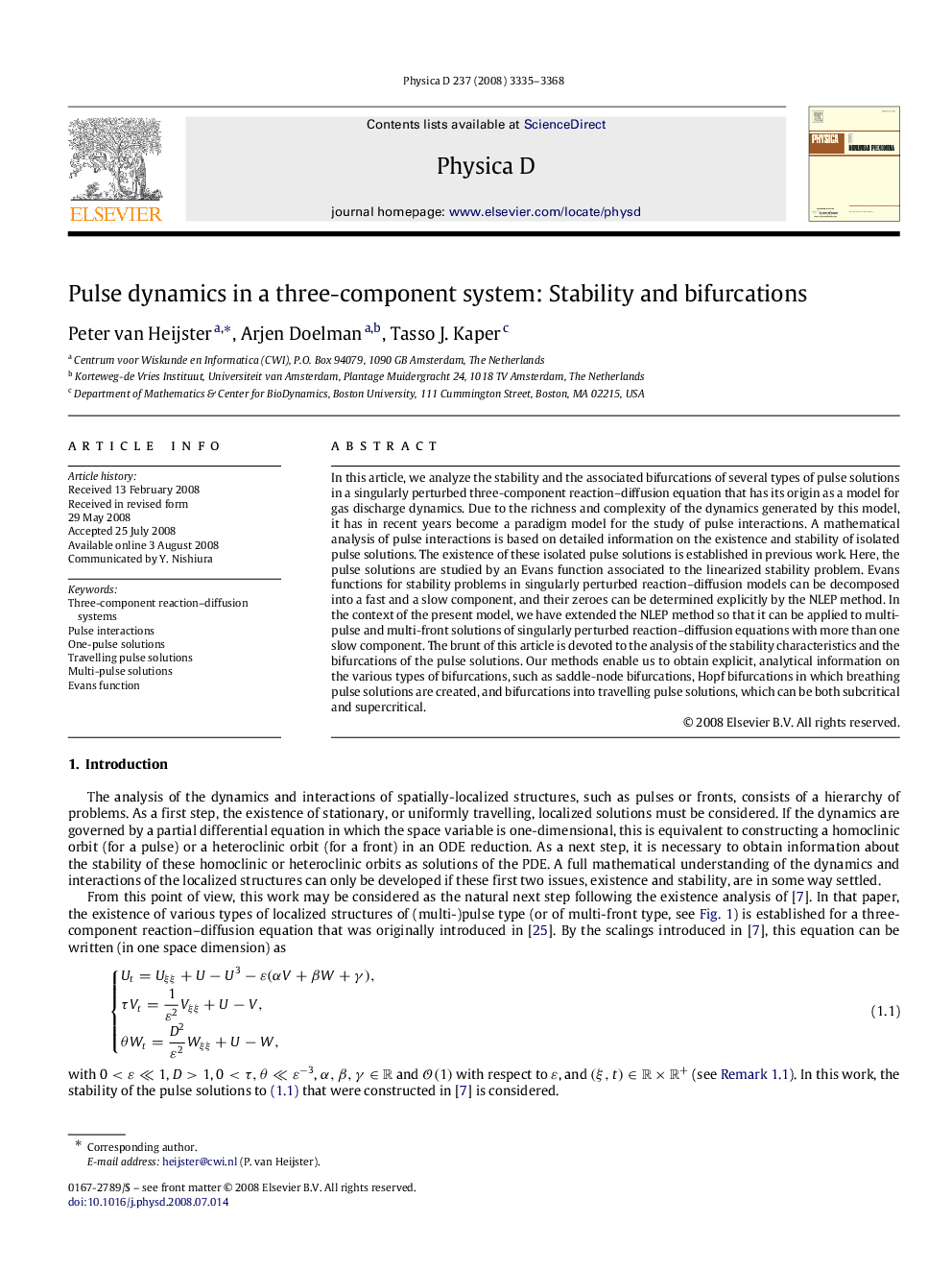| Article ID | Journal | Published Year | Pages | File Type |
|---|---|---|---|---|
| 1897739 | Physica D: Nonlinear Phenomena | 2008 | 34 Pages |
Abstract
In this article, we analyze the stability and the associated bifurcations of several types of pulse solutions in a singularly perturbed three-component reaction-diffusion equation that has its origin as a model for gas discharge dynamics. Due to the richness and complexity of the dynamics generated by this model, it has in recent years become a paradigm model for the study of pulse interactions. A mathematical analysis of pulse interactions is based on detailed information on the existence and stability of isolated pulse solutions. The existence of these isolated pulse solutions is established in previous work. Here, the pulse solutions are studied by an Evans function associated to the linearized stability problem. Evans functions for stability problems in singularly perturbed reaction-diffusion models can be decomposed into a fast and a slow component, and their zeroes can be determined explicitly by the NLEP method. In the context of the present model, we have extended the NLEP method so that it can be applied to multi-pulse and multi-front solutions of singularly perturbed reaction-diffusion equations with more than one slow component. The brunt of this article is devoted to the analysis of the stability characteristics and the bifurcations of the pulse solutions. Our methods enable us to obtain explicit, analytical information on the various types of bifurcations, such as saddle-node bifurcations, Hopf bifurcations in which breathing pulse solutions are created, and bifurcations into travelling pulse solutions, which can be both subcritical and supercritical.
Keywords
Related Topics
Physical Sciences and Engineering
Mathematics
Applied Mathematics
Authors
Peter van Heijster, Arjen Doelman, Tasso J. Kaper,
